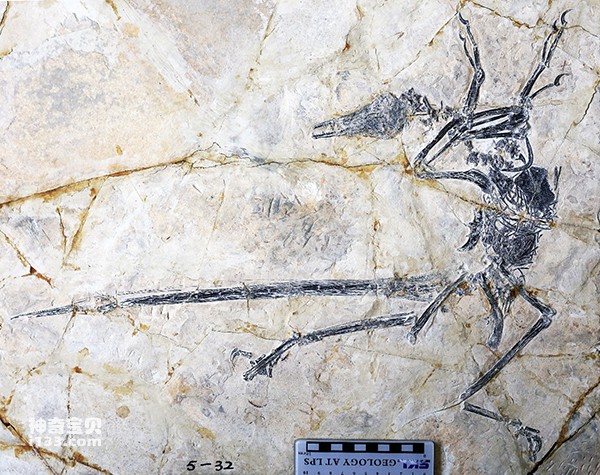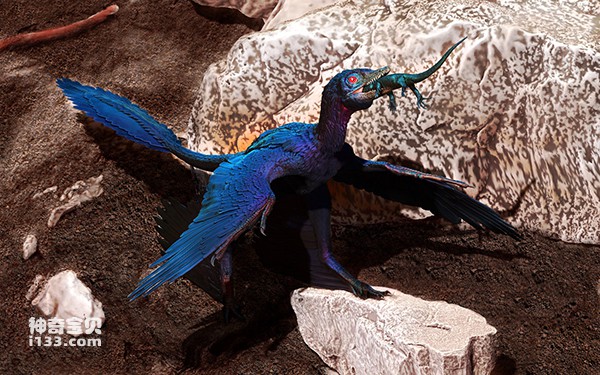On July 11, "Current Biology" published online the latest research results of Zou Jingmei, Dong Liping, Zhou Zhonghe of the Institute of Vertebrate Paleontology, and Zheng Xiaoting of the Tianyu Museum: a dromaeosaur from the Jehol Biota in the Early Cretaceous. The stomach of Microraptor zhaoianus, a new specimen in science, contains an almost completely undigested lizard individual. This is the fourth Microraptor specimen reported so far to have food in its stomach.
After observation and analysis, the research team believed that this lizard specimen represented a new genus and species, and named it Indrasaurus wangi. The genus name "Indra" comes from the Vedic legend of ancient India. In a famous battle, the ancient god "Indra" was swallowed whole by a dragon (here alluding to Microraptor); the species name " "Wang" is named after Wang Yuan, curator of the Museum of Paleontology of China and researcher at the Institute of Vertebrate Paleontology, Chinese Academy of Sciences, in order to pay tribute to his outstanding contributions to the research of ancient amphibians and reptiles and the popularization of paleontology over the years.
Phylogenetic analysis results show that Indra king's lizards are closely related to Cretaceous lizards, but more distantly related to modern lizards. It is worth mentioning that the teeth of this lizard are different from other lizards in the Cretaceous Jehol Biota, which increases the biodiversity of lizards in the Jehol Biota and also implies that the feeding habits of this lizard may be higher than other lizards. Lizards are different.
The Microraptor Zhao specimen reported in this study is the fourth Microraptor fossil reported so far that preserves food in its stomach. Combined with previous research, it is known that Microraptor was a carnivorous dinosaur whose diet included birds, fish, mammals and lizards, indicating that Microraptor was an opportunistic hunter. The lizard inside the body is swallowed whole from head to tail. This eating method is similar to the way that predatory birds prey on lizards today.
Even the troodontosaur Anchiornis, which lived in the Jurassic period, already had digestive characteristics similar to those of modern birds (eating indigestible bones, hair, insect hard shells, etc. into food balls) spit out), but Microraptor obviously did not possess this method of digestion. This shows that during the evolution from dinosaurs to birds, similar groups evolved in parallel, and some traits may have evolved independently many times.
In the past 20 years of research on the Jehol Biota, researchers have collected more than 20 pieces of direct evidence indicating biotrophic interactions (mainly referring to food found in the stomachs of species). This study integrates existing research results. A preliminary food web of the Jehol Biota was tentatively reconstructed, and the results showed that fish are the most important food resources for secondary and tertiary consumers. This provides information for further understanding of the ecosystem of the Jehol Biota. new evidence.
This research was funded by a pilot project of the Chinese Academy of Sciences and a project of the National Natural Science Foundation of China.
Paper link: https://www.cell.com/current-biology/fulltext /S0960-9822(19)30713-4

Photos of Microraptor Zhao (STM5-32) specimens (Photo provided by Zou Jingmei)

Photo of the recovery of Microraptor Zhao after swallowing Indra lizard Wang (Photo provided by Zou Jingmei)
animal tags:
We created this article in conjunction with AI technology, then made sure it was fact-checked and edited by a Animals Top editor.